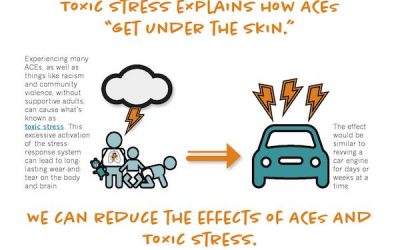Post Traumatic Stress Disorder in Babies and Toddlers: What Are the Symptoms?

Post-traumatic stress disorder (PTSD) is a reality for many babies and toddlers with special needs. That’s the bad news. The good news is that effective treatments for PTSD exist, and they can be used with children as young as three. Before effective treatment can occur, the condition must first be correctly diagnosed. And for diagnosis to occur parents and health care professionals must be aware of the symptoms of PTSD.
Behavior Reveals Symptoms of PTSD in Babies and Toddlers
PTSD symptoms manifest much differently in babies and toddlers than in older children, adolescents, and adults. Because babies are preverbal and toddlers’ language development is limited, they can’t verbalize their fears. They can’t describe a nightmare or flashback. But the behaviors of infants and toddlers who have experienced significant trauma can offer clues that indicate the development of PTSD. By closely observing their behaviors, caring adults may notice symptoms related to PTSD.
Symptoms of PTSD in Babies and Toddlers
What are some of the behavioral symptoms to look for?
1. Hypervigilance
A baby who is tense, watchful, or on guard even when in a familiar, comfortable, and safe environment is hypervigilant. Adults often consider the behavior to be part of the child’s personality. “He’s an anxious child,” we say. Or, “She’s a worrier.” But the behavior could be a symptom of PTSD.
2. Separation Anxiety or Clinginess
Most babies go through a clingy period between the ages of 6 and 12 months. But when a baby is clingy from a much earlier age and whose separation anxiety persists into toddlerhood, the behavior may indicate the development of PTSD.
To read the rest of this post, visit www.FriendshipCircle.org.
To read the other posts in this series about PTSD in kids, check out these links:
- Confessions of a Post-Traumatic Stress Disorder Advocate
- 5 Myths and Misconceptions about Children and Post-Traumatic Stress Disorder
- What Is Post-Traumatic Stress Disorder in Kids?
- 10 Causes of Post-Traumatic Stress Disorder in Children
- PTSD Risk Factors in Kids with Special Needs
Do you like what you see at DifferentDream.com? You can receive more great content by subscribing to the quarterly Different Dream newsletter and signing up for the daily RSS feed delivered to your email inbox. You can sign up for the first in the pop-up box and the second at the bottom of this page.
By Jolene
Jolene Philo is the author of several books for the caregiving community. She speaks at parenting and special needs conferences around the country. Sharing Love Abundantly With Special Needs Families: The 5 Love Languages® for Parents Raising Children with Disabilities, which she co-authored with Dr. Gary Chapman, was released in August of 2019 and is available at local bookstores, their bookstore website, and Amazon. See Jane Sing!, the second book in the West River cozy mystery series, which features characters affected by disability, was released in November of 2022.
Subscribe for Updates from Jolene
Related Posts
The ACEs and Toxic Stress: Implications for Children with Special Needs?
This infographic shows the relationship between ACEs and toxic stress. This relationship has implications for our children with special needs.
Preventing PTSD: 11 Things To Do If Your Child Has Been Through Trauma
Preventing PTSD in children who have experienced trauma is possible. Lydia Jenkins, D.O. Pediatrics offers 11 strategies for parents to use.
More Than Words: The Freedom to Thrive After Trauma
The author of More Than Words: The Freedom to Thrive After Trauma explains why she wrote the book and how she made a heavy topic easy for readers to digest.






0 Comments